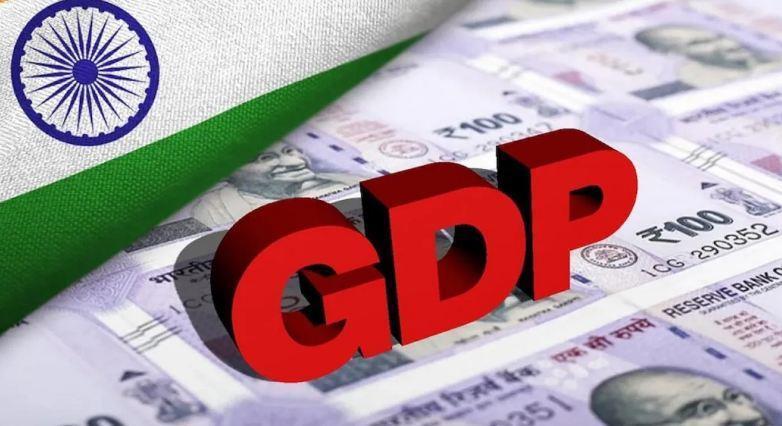By Dr. Gyan Pathak
The total GDP loss due to climate change under median climate change scenario in 2070 is found to be 16.9% in Asia and the Pacific, with all economies experiencing losses. Changes are in GDP are most pronounced in Bangladesh (-30.5%), Viet Nam (-30.2%), Indonesia (-26.8%), India (-24.7%), Rest of Southeast Asia (-23.4%), Higher Income Southeast Asia (-22.0%), and Pakistan (-21.1%).
The latest ADB working paper titled “Quantifying the Economic Costs of Climate Chang Inaction for Asia and the Pacific” in its analysis has also said that the climate-related loss of labor productivity plays a major role in this loss, for example totaling nearly half of GDP losses in Rest of Southeast Asia, Pakistan, and India.
Sectoral value added loss by 2070 for India under high-end emission has been estimated for coal (-10 per cent), Oil (-5 per cent), Gas (-6 per cent), electricity (-12 per cent), heavy industry (-28 per cent), Light industry (-27 per cent), market services (-25 per cent), petrol products (-13 per cent), public services (-21 per cent), fisheries (-16 per cent), food processing (-17 per cent), other agriculture (-22 per cent), vegetables and fruits (-17 per cent), other grains (-18 per cent), rice (-19 per cent) and wheat (-24 per cent).
As for the river-based flooding, the expected annual damage (EAD) and the expected population (EAP) are two indicators that depend on losses as well as the size of the economy and population. India and the PRC (China) stand out in terms of high EAD in both the industrial and commercial sectors, whereas the EAP is high in India, the PRC, Indonesia, and Bangladesh. Total median annual losses reach over $1.3 trillion by 2070, with 110 million people affected.
The regional GDP loss due to yield-related shocks in agriculture in 2070 under median change scenario has been calculated at 0.9 per cent. The low regional value masks considerable variability. The largest effects on overall GDP in Pakistan would be (-7.2%), Higher Income Southeast Asia (-3.0%), Rest of Southeast Asia (-2.0%), and the Philippines (-1.9%).
Overall regional GDP loss attributable to fisheries yield shocks under median change scenario is small at around 0.5% in 2070. The most affected economies in the area are Pakistan, Indonesia, Rest of South Asia, and the Philippines, losing respectively 3.5%, 3.5%, 3.3%, and 3.0% of GDP in 2070. Bangladesh is found to modestly benefit.
Shocks to forestry yields under median change scenario lead to similar overall GDP losses in 2070with a change of -0.7%. The most impacted economies are Viet Nam (-2.6%), Bangladesh (-2.5%), Rest of Southeast Asia (-1.9%). and India (-1.8%).Forestry VA (value added) changes in 2070 due to forestry yield reductions are most pronounced in Rest of Southeast Asia (-15.2%), Higher Income Southeast Asia (-13.0%) and India (-12.7%).
The overall GDP loss due to changes in labour productivity under median change scenario in 2070 is 5.0% for Asia and the Pacific. The most impacted regions and economies are Rest of Southeast Asia (-11.9%), India (-11.6%), and Pakistan (-10.4%).
In India, losses are of a similar magnitude in industry and services under median change scenario, while agriculture loses 9.3% to 11.6% of VA. Pakistan has nearly the same loss levels as India, while other regions have somewhat lower magnitudes of losses in industry and services.
Energy demand shocks in 2070 under median change scenario would lead to an overall GDP reduction of 3.3% for Asia and the Pacific. India, the PRC, and Central Asia are the most affected economies, with GDP losses of, respectively, 5.1%, 3.7%, and 2.5%. The PRC and India are the economies experiencing the highest electricity demand increases. Due to energy demand shocks, India’s 2070 VA losses range between 2.0% and 3.5% in subsectors of agriculture, 5.6% and 6.6% in industry, and 5.1% and 6.3% in services.
Increased flooding under median change causes a regional 2070 overall GDP loss of 2.2%, with Bangladesh, Rest of Southeast Asia, and Viet Nam being the most affected, experiencing losses of 8.2%, 6.6%, and 6.5%, respectively. All economies in the region are negatively impacted by flood-related shocks.
Sea Level Rise (SLR) leads to a 6.3% loss in overall regional GDP in 2070 under a high-end emissions scenario. All regions experience GDP losses, with Indonesia and Bangladesh showing the most pronounced losses at 16.1% and 15.4%, respectively. Additionally, the Pacific, Higher Income Southeast Asia, and Viet Nam experience losses exceeding 10%. Pakistan has the lowest GDP loss due to SLR, as the higher relative damage to competing economies improves its comparative advantage in trade.
EADs due to SLR are larger in magnitude than those due to riverine floods (by almost 10 times). Total 2070 losses reach $3 trillion annually, with about 50 million people affected. The highest EAD values are found in the PRC, India, Indonesia, and Bangladesh. EAP is largest in the PRC, India, Bangladesh, and Viet Nam.
The results for the high emissions climate scenario (RCP8.5) show a 41.0% reduction in regional GDP by 2100. There is especially large vulnerability for Bangladesh with a potential 77.9% GDP reduction, Viet Nam with a 67.9% reduction, and Indonesia with a 61.1% GDP reduction.
Under RCP4.5, regional losses would be 20.0% of GDP in 2100, with Bangladesh experiencing a 41.1% GDP loss, Viet Nam losing 33.8%, and a number of other economies facing 20%–30% losses.
Under RCP2.6, which would require immediate emissions reductions that reach global net zero by 2070, regional losses would be 11.2% of GDP, with Bangladesh still facing a 24.5% GDP loss and several other economies and subregions facing losses in excess of 15% of GDP.
The paper says that the losses are much higher than in earlier findings that rely on CGE modelling. Results of 17% GDP loss by 2070 imply a regional GDP loss of 41% by 2100, which is higher than regional results of 24% of GDP previously estimated in 2023.Even a scenario that attains Paris Agreement goals leads to 11% GDP loss by 2100 in the Asia Pacific region. (IPA Service)

 Reservation Issue Becomes The Focus Of Political Fight Between BJP And Congress
Reservation Issue Becomes The Focus Of Political Fight Between BJP And Congress 